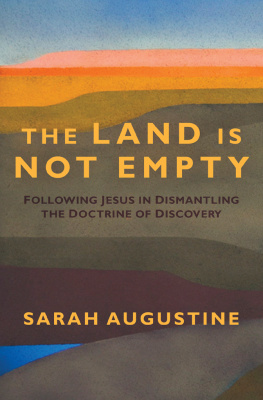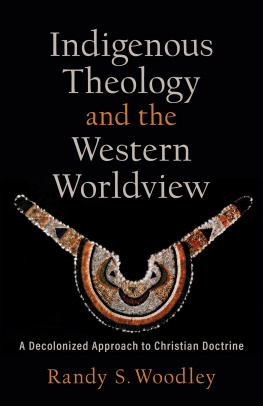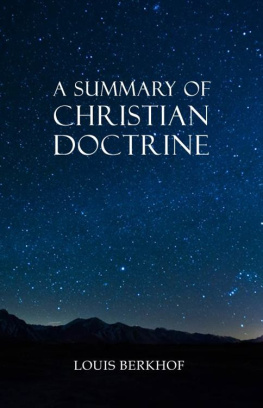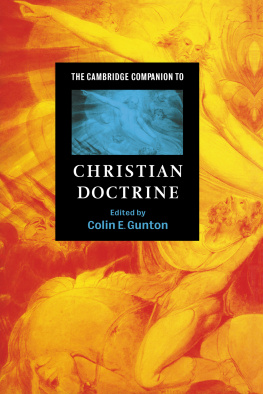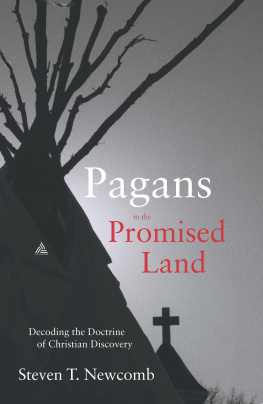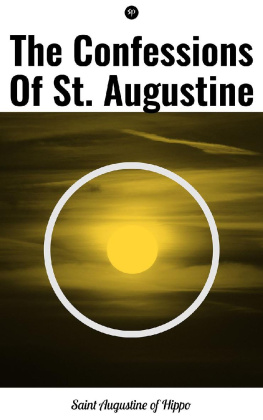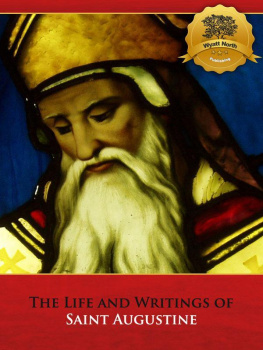Contents

Acknowledgments
FIRST, I MUST acknowledge my husband, best friend, and partner, Dan Peplow. The ideas expressed here are the product of years of shared labor, research, and conversation. While my name is on the cover, all my work is really the product of a collaboration between the two of us. There truly is no me without you.
I also wish to acknowledge Sheri Hostetler, without whom this book would not have been possible. As co-founder of the Anabaptist Dismantling the Doctrine of Discovery Coalition, Sheri has met with me nearly every week since 2014, and knows this material as well as I do. I am so thankful for her countless hours of labor in shaping and pruning every single draft. Her contributions and edits were invaluable, and she co-wrote chapter 10 with me. I want to thank Weldon Nisly, my pastor for many years, for believing in me and in this work, and for introducing me to Sheri.
Several readers contributed to the final stages of the drafting process. My mentor Steve Darden has provided healing, guidance, and support to me over many years, as well as sensitive input in the drafting of this book. Astrid Aveledo thoughtfully read and commented on drafts despite her numerous commitments, while she simultaneously engaged in important work as a community leader and executive director of a dispute resolution center. I am so thankful for Astrids dedication, sensitivity, and commitment to speaking the truth as an Indigenous woman. Sabrina Porter Lindquist contributed hours of reading and writing in the form of detailed, wise comments that both challenged me to back up my assertions and to speak the truth. I want to acknowledge the partnership of editor Aimee Moiso from Herald Press; I am thankful for the grace she showed me in wrestling with difficult material further challenged by a cross-cultural conversation.
I must acknowledge the leadership and members of the Dismantling the Doctrine of Discovery Coalition for community, true solidarity, and partnership over many years. Anita Amstutz, Erica Littlewolf, Karin Kaufman Wall, Jonathan Neufeld, Katerina Friesen, Tim Nafziger, Luke Gasho, Carol Rose, John Stoesz, Alison Brookins, Ken Gingerich, Sarah Nahar, Jonathan Nahar, Jennifer Delantey, and many others have heavily influenced my thinking and writing. I owe each of you profound thanks.
I want to acknowledge that the dismantling journey occurred because of an invitation from Maria Chavez, Bolivian theologian and leader. Maria, the work continues. I also want to acknowledge the mentorship given to me by Tonya Gonnella Frichner, Onandaga woman and contributor to the United Nations Declaration on the Rights of Indigenous Peoples, who helped me navigate the United Nations system. The world is diminished by the absence of these fearless women.
I further want to acknowledge the Indigenous leaders, activists, and community members with whom it has been a privilege to partner in the Guiana Shield. Your bravery and endurance amaze me.
My thanks to friends and neighbors on the homeland of the Confederated Bands and Tribes of the Yakama Nation. It is a privilege to get to live here as a guest on your healing land.
I want to thank Cameron Altaras and Carol Penner for generously allowing me to include a revised version of the chapter I wrote for the forthcoming book Resistance: Addressing Violence in a Peace Church . I also want to thank Katerina Friesen for allowing me to include a passage I wrote for the forthcoming reparations resource for the Dismantling the Doctrine of Discovery Coalition.
Finally, thank you to Dan and Micah for helping with my chores, putting up with late nights, and allowing me the hours and hours over many months of sitting in my office, and our shared space, writing.
The Author
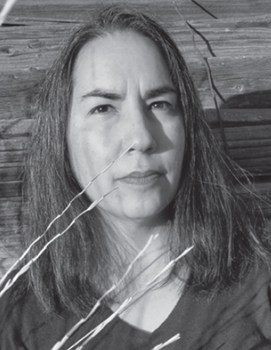
SARAH AUGUSTINE is cofounder and cochair of the Dismantling the Doctrine of Discovery Coalition and executive director of the Dispute Resolution Center of Yakima and Kittitas Counties. Augustine, who is a Pueblo (Tewa) descendant, has written for Sojourners , The Mennonite , Anabaptist Witness , Response Magazine , and other publications, as well as a variety of academic journals. She has consulted with the World Council of Churches, Methodist Women, the Episcopal Church, and other church bodies. She and her husband, Dan Peplow, and their son live in the Yakima Valley of Washington.
ONE
The Doctrine of Discovery and Me
I LIVE AMONG THE YAKAMA PEOPLE in central Washington State, specifically on a small ranch just below the precise place where the sky touches the earth: Toppenish Ridge. The place where I stay is nestled against a series of curved foothills, along the southern edge of the earthen bowl surrounding the Yakima Valley.
I am blessed to be welcomed as a neighbor among the Yakama people because in a nation that equates freedom with the open road, gasoline, and automobiles, Im a walker. Cars have always made me nervous; I was an adult before I took my first driving test and earned a license. Although I have a car, I have owned one for just half my adult life. This walking sensibility is a gift where I live. It allows me to see fully the world and community around me.
Although I live in a rural community where small towns are dozens of miles apart, it is a walking place to many people, especially among the Yakama peoples. You may notice if you visit this place that Yakama people pop up in unexpected places. Seemingly empty lots. Medians. The blank spaces between buildings.
When driving-culture people look at an unfamiliar place, they look to roads. Homes, neighborhoods, businesses, even landmarks like mountains and rivers are viewed in relation to roads. Maps define communities by the roads that snake through them, guide travelers from where they are to where they wish to go.
If a person is looking at a place through the frame of roads, roadless places are not visible. This is why a road-centric person who is pumping gas at the Yakamart gas station may be startled when a local person is suddenly standing nearby. Where did this person come from? The road-centric person looks to the left and the right. No car drove in. Did this person materialize out of the weeds? Actually, the person was rendered invisible by simply inhabiting the space that is irrelevant when traveling by road.
As a walking person, I am open to thinking about space in shorter distances, since I walk to familiar places accessible easily on foot. Whether in Manhattan or on the reservation, distance and time take on different meanings without a car. When I walk the three miles of Island Road from the main road to my house, the farms along the fence do not seem small or uniform at all, as they might to someone whizzing by in a car. If you walked with me, the burning sensation in your calves would force you to notice the hill we would crest, the place where the pavement peters out into gravel. You would see the clear distinction between the overgrazed pastureland on the east side of the road and the wildlife preserve to the west. You would notice the difference between a field worked with large equipment (tilled into neat rows) and pastures meant for livestock (plenty of weeds). You would appreciate the different foliage on the hills (green orchard grass or brown wheatgrass) and in the hollows (riparian toolies and cattails).
If you imagine space through a walking perspective, what may appear to be an empty lot from a car window becomes a rich ecosystem. What seemed to be a strip of land between buildings is actually a wide thoroughfare. From the walking perspective, any land good for foot travel is a safe distance from the dusty, reckless roads.

